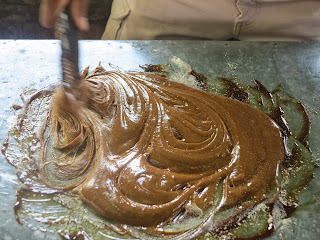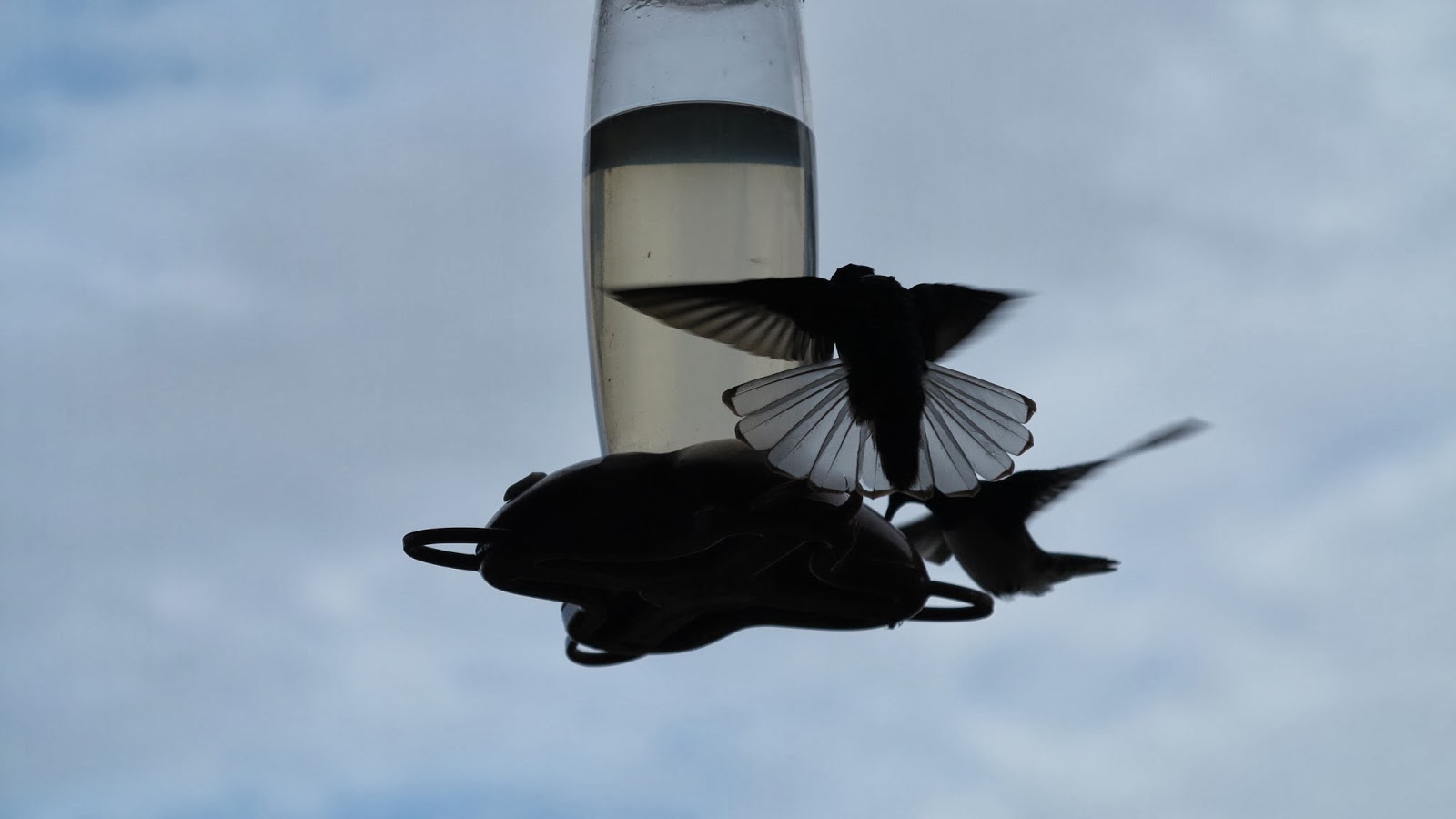In late 2012 I won a stay at two properties of my choice run by the stellar Cayuga Sustainable Hospitality Company in Costa Rica. In mid April this year my daughter Ayla and I traveled first to Hacienda Tayutic in Turrialba, and then to the Harmony Hotel in Nosara. We did not know that we would be one of the last sets of tourists (the very last, I think) to stay at Tayutic before it was closed to all but family and large wedding groups.
Please click on photos to see them enlarged
The front lip of Green Season, warm, damp; mist washing the layered landscape of river, dam lake, hills of agriculture, and rainforest beyond.
The timber house yawned open dressed in nostalgia and a light humid mustiness.
A young woman alone in the entry space greeted us kindly. Her presence was welcoming, yet the silence of the hills around us, the wind freely flowing through the open walls, and the long car ride we had suffered half sleeping, half flight-drugged led us to believe that we had reached the center of nowhere - a deeply secluded hideaway complete, surely, with the magical narratives of Marquez.
We opened the door to our room and Ayla gasped at the view. Framed by wicker armchairs in a balcony, one for each of us, the landscape appeared anew, composed for our private consumption.
The timber walls creaked complaints of the humidity. Even before dusk we wondered about the ghosts who might be our company, though the creaking house, it's vintage, is just the credible ruse of carefully considered architecture and landscape.
Built in the late 60's the house is younger than it seems, but the aged family mementoes of other places it contains are real: collected fragments -- Spanish colonization; the personal life of coffee plantations; the veins of a family, 6 generations from Gaspar Ortuno y Ors, Spaniard (later immortalized on a bank note.) Old tools of the coffee industry. Cabinets full of horsemanship trophies. Old photographs of a victorian couple, and new ones of a large family posed Ralph Lauren-styled on a large hacienda porch. Antique ceramics and furniture, coffee table books and novels from the owners' own travels. A man's shirt in our dresser drawer. Visiting this first time I felt like an interloper or, at moments when the house was less empty, like personal guest to a family whose home we were occupying upon generous invitation.

Without the props of tourism usually visible in hotels the world over, Hacienda Tayutic, strung along tiny Sitio de Mata in Turrialba offers a rare approximation of "authenticity". The wonderful kitchen staff, the owners' own cook, fed us royally, and with kind smiles to and from the enormous kitchen we communicated a mutual friendly gratitude. In that kitchen, Ayla met the cook's grandson, we all hugged, and we promised to be like family, and visit as they grow. We watched men working the land, thinning or harvesting the pichiyo (sp?) plants brightly ornamented with poisonous yellow fruit. We visited the puppies born to an unwanted stray who insisted the plantation was her home. We picked guava from the ground under the trees lining the grassy path to the old church. Ayla spat it out. We explored and conquered key corners of the 300 hectare property to make it our own, in our imaginations, for the 4 nights we stayed.
 |
| Pichiyo (sp?) the root dried and used as a pesticide in the macadamia orchards |
 |
Gauva trees and the old Iglesia Sitio de Mata -
typically locked, but available for weddings (!) |
 |
| Her favorite part of the trip |
 |
| The runt I wanted to take home |
 |
| Photo: Ayla Hadimi Ladha |
That evening we met our housemates, 2 friendly Californian women traveling together, as has been their years-long annual tradition. This year, a trip to 4 major points in Costa Rica. We shared the dining patio with them at night and at breakfast -- 2 pairs of females randomly connected in this impossibly isolated place. S and N had been at the Hacienda for a whole day more than us, and through them we learnt the latest hacienda gossip and the best tours to take. Whittling the options, we choose our activities for the next few days, and ended up with Jorge, our guide and coach for the rest of our stay.
Unlike the Hacienda, Jorge Solano's ruse is a Peter Pan youth. Playful, but a businessman and experienced outdoorsman, Jorge showed us around his playground with a big smile and informed answers to all our questions. Our lessons included the history and workings of the Tayutic plantation - coffee, sugar cane and macadamia.
Coffee
 |
| Various stages of the coffee bean - photo: Ayla Hadimi Ladha |
 |
| Good spot to sunbathe |
 |
| Red Sox Coffee roaster! |
 |
| For American coffee, roast 5 minutes. Or 20-25 minutes for Espresso |
Scenes from the Trapiche (traditional sugar mill)
 |
| Hercules and Samsun turn the press to squeeze juice from sugar cane |
 |
| 80% sugar, 20% water, 120º C |
 |
Packaged for distribution in male and female form, each block sells for $1.
A block-worth of granulated sugar sells for $6.
Look for the Dulce T brand, from Tayutic! |
 |
| Candy. Thats molasses and butter |
 |
| Add powdered milk |
 |
| Add chopped macadamias |
 |
| Eat, and lick fingers. |
Macadamia lessons
 |
Under a macadamia tree, thats where I'll be.
Squirrels are the biggest pest in both macadamia and guava orchards.
Photo: Ayla Hadimi Ladha |
 |
| Photo: Ayla Hadimi Ladha |
 |
Good nuts, bad nuts; unshelled, shelled
Bad nuts and shells are used on the farm as fuel.
Photo: Ayla Hadimi Ladha |
 |
Sorting the nuts. This machine is for demonstration only
The nuts are processed at a factory co-op, 35% owned by Tayutic.
Photo: Ayla Hadimi Ladha |
I talked to Ayla about the concept of 'exotic'. Just lightly - the politics of otherness were too complicated for me to explain well to a 9 year old. The most exotic aspect of Tayutic, we decided, were the hummingbirds we discovered during our first breakfast. Neither of us had seen one live before, and didn't know that they came in so many colors. The few stuffed specimens at the Natural History museum at home weren't nearly as vibrant. A whole morning was dedicated to 'capturing' these fast, flittery creatures.
We weren't very successful.
Despite the american women, the daytime company of Jorge and his crew, and lovely Ana and others working at the Hacienda, we felt very alone. Unusually, physically alone. The nights, lit by bright lamps on a football field in town down hill, were populated only by a night guard - never seen. The American women were staying in a separate building. The water and cookies on the table left for us outside the kitchen were our only tie to others until morning. Lying in the dark, in romantic fashion we imagined our own adventure stories populated with talking hummingbirds and horses, sited in the terraced grounds and haunted rooms. The aloneness was not loneliness but a profound, soul-challenging quiet.

The solitary quiet seemed fitting of this isolated working spot - I cannot imagine it any other way. But apparently, depending on the week or day, visitors could be sharing the hacienda with members of the owners' family, who were basically renting out their home in the margins of their own visits from San Jose. The Cayuga touches were noticeably absent compared to the other property I visited the year before. Perhaps we weren't such welcome guests. Perhaps we were the shadow visitors of a previous era - some glory days of Tayutic tourism when the wind-blown halls rang with happy voices of large-walleted guests, and owners' shirts were never left to be found in a drawer. Glory days that ended the day before we arrived, apparently.

Turrialba is located a few hours drive east of San Jose, on the bus route to Limon.
For bus schedule: http://www.thebusschedule.com/cr/index.php
www.cayugaonline.com
www.turriadventours.com (Jorge Solano)
www.tayutic.com (website not active at time of posting)











































